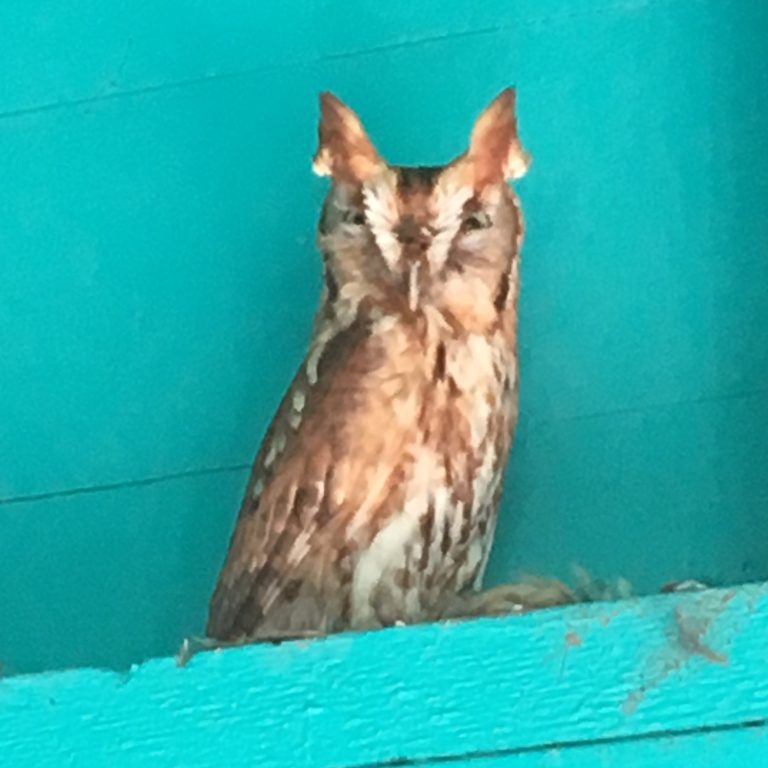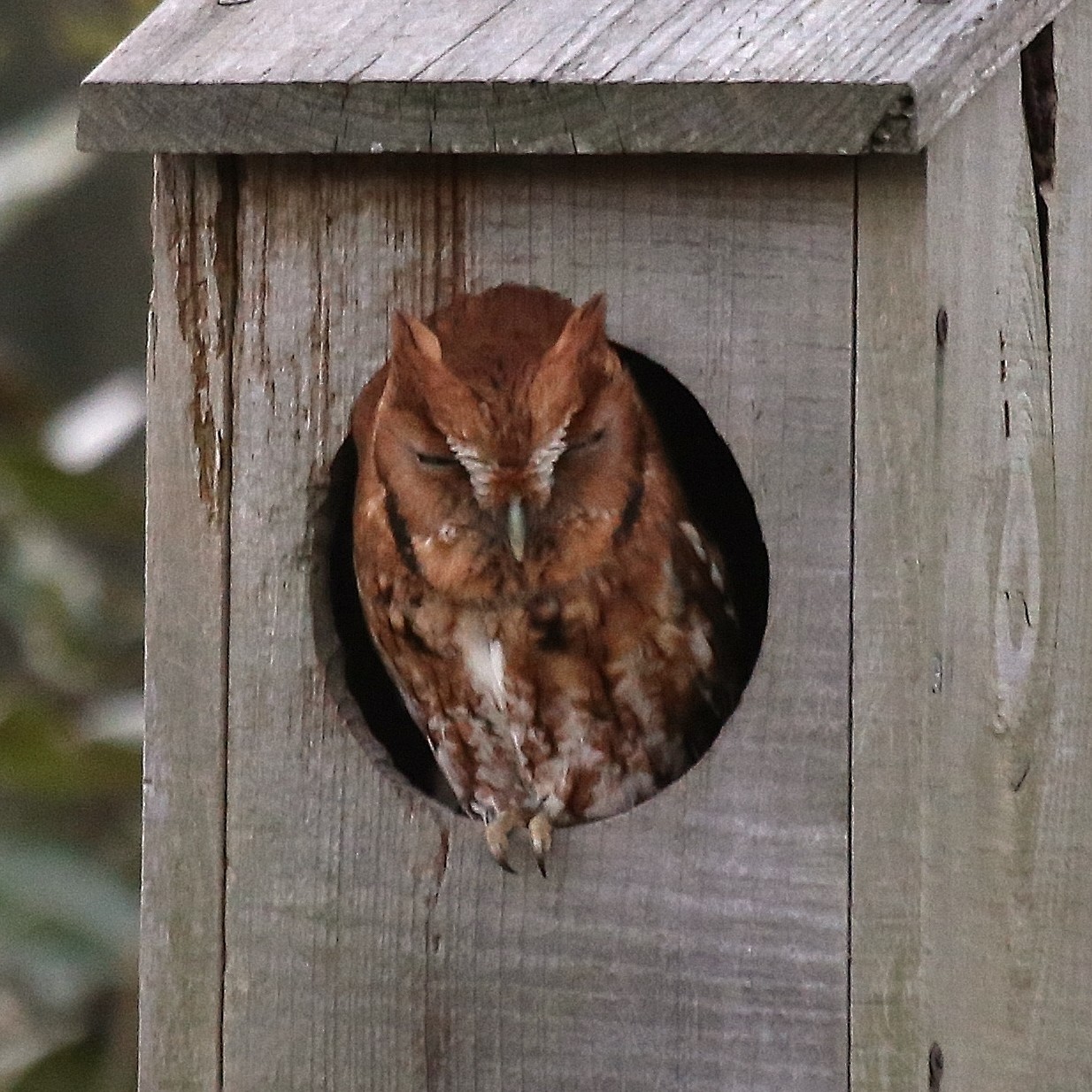Of all the owls in the eastern U.S., the prize for cutest goes to the Eastern Screech Owl. As with all owls, these small birds are well camouflaged, helping them blend into the woods where they live. But once you spot one, it is hard not to say Wow! And they come in two colors – the more prominent gray phase and my favorite, red phase birds, accounting for about one third of the population.
And these small owls can find homes even in urban settings, if there are enough woodlands around. Larger Barred and Great Horned Owls need a bit more habitat, and typically reside in the countryside. Urban areas also support plenty of the smaller prey that Screech Owls need.
So how can you find these jewels of the owl world, you ask? The best way is to get out at night and listen and, if you can, mimic their most common call. My friend and mentor Charlie Brenke was good at it! He could purse his lips and blurt out a very good rendition of what I describe as their gargled trill. As poor as my version of this call is, I am usually able to get a Screech Owl to answer me, and even fly in to check me out. Yes, hairs on my neck do standup when they do.
It took me a while to master the trill of a Screech Owl, only because of how Charlie explained the process. “First you fill your mouth with spit, Mark. Then just try to whistle.” It was hard for me to not bust out laughing at first as I tried, but Charlie was right. The spit is the key! Or, at least moistening your lips.
Charlie taught me to use that call for another reason. Because songbirds are high on the list of Screech Owl menus, making these calls was a great way to attract birds to you during the day. Nearby birds will fly in looking for their nemesis, that would be you mimicking an owl, to ensure that they know where it is and warn others. Birders also commonly use what is called pishing, a common alarm call of birds (pish, pish, pish), to do the same.
You may also be able to find a resting owl during the day by listening for alarm calls from one or more birds, especially Bluejays, the busy bodies of the bird world. Their loud calls usually mean they have found a predator, like an owl, hawk, or snake and want to share the news with others. Just follow the calls and look closely. Or, they just show up, in unexpected places, like sheds.

But, be aware that using your own version of an owl’s trill or a recorded call from a birding app should not be used during the breeding season. Any nesting bird will respond to a call from what it may perceive as an interloper in its territory or a predator. In doing so, it will waste time searching out the threat, rather than spending time finding food for its young. Calls should only be used outside of breeding season.
So, stop, look and listen for Screech Owls in your neighborhood. You will not be disappointed when you find one.
Hope to see you in our great outdoors!
Photo of Screech Owl in nest box courtesy of Larry Dees.




